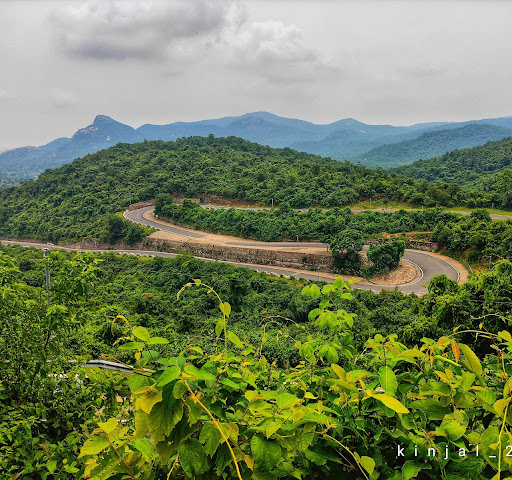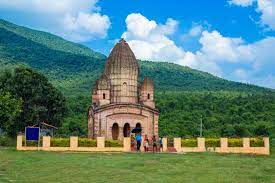Welcome to Purulia, a gem that is just waiting to be discovered in the center of West Bengal, India. Purulia, which is tucked away in beautiful scenery and rich in history, offers visitors looking for a trip that combines history, nature, and cultural diversity an incredible experience.
Famous places in purulia for tourism
There are some famous tourist places in purulia.They are
Ajodhya Hill and Forest Reserve Area
Ajodhya Hills in Purulia is part of the Dalma Hills region and is the easternmost part Chhotanagpur Plateau. Ayodhya Pahari covers an area of 320 square kilometers and is divided into four districts. blocks (Arsha, Jhalda, Baghmundi and Balarampur) in Purulia district. a word “Ajodhya” (local name Ajodhya) came from the Dravidian word “Ajhaida” (Ajhai – big, Da – Daha). The hills are mostly covered with Sal and Segun forest and other plants like Mahua, Palash, Kusum, Neem, Bel etc. The forest is sometimes quite dense and many animals live there such as deer, pig, fox and elephant. Ajodhya Hills is home to many tribal communities. Some of them are Santhal, Birhor, Munda and Bhumij tribes who were once great hunters. But now their main occupation is agriculture livelihood The hills of Ayodhya range from a few hundred meters to 2,800 feet. The highest peak in Ayodhya The mountain is Gorgaburu (855 meters). In Santhali, the word “Buru” means mountain (Bengali: पाहार). Purulia, the district headquarters, is the nearest major city to Ayodhya Pahari. It is 40 km From the top of Ayodhya hill. Located on the border of Jharkhand, Ayodhya Hill is 84 and 110 km long of Jamshedpur and Ranchi. The distance from Kolkata to Ayodhya Pahar is 320 kilometers.

Panchet hill and Garh panchakot
The name Garpanchkot evolved from the garh or garh (fort) of the king of Kashipur who built a garh and a temple on that hill. Panchkot Hill (also called Panchet Hill) has a height of about 2000 feet. Panchet Hill is full of tropical trees and looks whip green during the rainy season. The Damodar River flows under the hill. The natural splendor of the fresh air of the forests and hills make the place an ideal weekend destination. Walk through the forest of Sal (Shorea robusta), Tamal, Sonajhur (Acacia auriculiformis), Palas (Butea monosperma) – the aroma of flowers and leaves will refresh you. Thanks to the tropical weather, summer and winter can be clearly felt in this place. The region had a rich cultural and religious past. The kings of the Panchakot dynasty, who are still alive, ruled the region continuously from the 940s to the 1750s under the name of Garh Panchkot, had to move their fortress to Kashipuri due to the Mughal invasion. Scattered around Garpanchkot are the ruins of many terracotta style temples. The most famous are the ruins of the Panchratna temple. Panchkot / Panchet dam is a must visit. You can walk along the concrete path and enjoy the humid cool breeze of the Damodar basin. Boating is available at the Panchet dam Kashipur Rajbari (Palace) is about 50 km from Garpanchkot. Although there is no historical evidence as to when this Rajbari was built, the architecture is inspired by colonial structures and may have been built in the late 1800s (1890-1905). It is a magnificent architecture with red bricks, stone, concrete and wood. Don’t forget to try Darbeshi, a ladoo made of besan and gur/chini, only available in and around Kashipur. Nature lovers have the opportunity to visit the Capista Garden, where the state government is reforesting endangered trees. If you are traveling with your own vehicle, there is a water point in front of Kapista, if you are lucky you will find turtles roaming in the riverside sand. Built by the British government in 1903, Adra is the largest railway junction in the region. Some colonial structures were built between 1905 and 1915. Take a closer look at the engines of the black locomotives that used to run on coal. If you’re lucky, you might see a steam engine whining past at Adra Station. If you are adventurous enough, visit the colonial jheel (water tank) just 3 km from Adra station. Joy Chandi Pahar (Mountain) has two rock formations and Chandi Mata temple is located on top of the highest peak. Satyajit Ray’s award-winning film Hirok Rajer Dese (In the Kingdom of Diamonds) has some scenes on that hill.

joychandi Pahar
Joychandi Pahar is a mountain that is a popular tourist destination in the Purulia district of the Indian state of West Bengal. It is two kilometers from Raghunathpur suburb and four kilometers from Adra town. The mountain is located 2 km south of the Purulia-Barakar road through Nanduara village and 1 km west of the Raghunathpur-Adra road through a growing area known as the Annapurna range. It is also only four kilometers from Adra Junction Railway Station and 1.5 kilometers from Joychandipahar Railway Station on the Adra-Asansol section. Joychandi Hill is a popular tourist center and a major rock climbing destination. Joychandi Pahar railway station is located in the state capital of Kolkata on the Asansol-Adra section of the South Eastern Railway. Another nearby rock climbing center is Susunia in Pahari.
There are many famous places in purulia such as BARANTI DAM,TARGA FALLS,BERO HILLS etc
Offbeat places in purulia
Hatimara Wall painting Village
Hatimara Wall painting Village is situated near LALPUR
More about it
Kashipur Rajbari
Kashipur Rajbari (Palace) is a famous heritage monument in Purulia, located seven kilometers from Adra and about 25 kilometers from Purulia station. The Panchakot royal dynasty lived in Kashipuri for more than 800 years.
more about kashipur rajbari
Gangtikuli Island
Gangtikulli Island – There is also an island in the Damodar River called Gangtikullii because of its Jujube (Kul in Bengali) forest. The now defunct Bengal Coal Company has many coal mines. It is also a picnic area.

